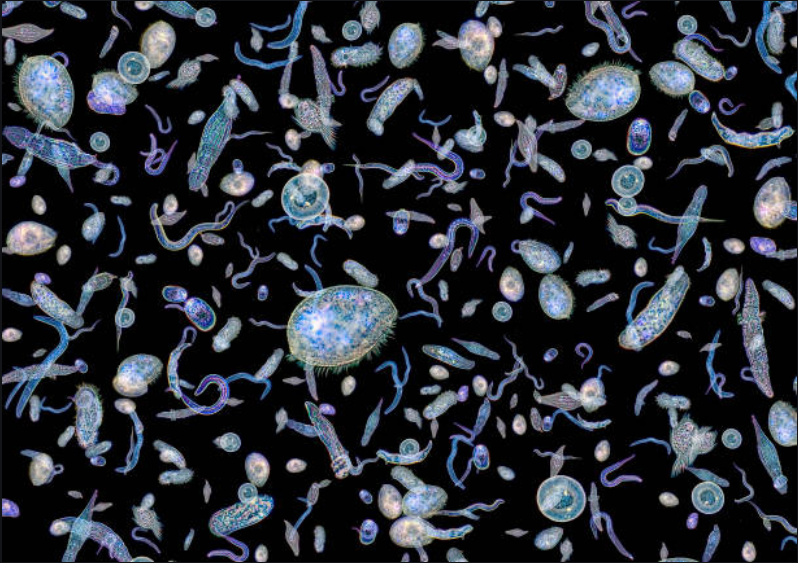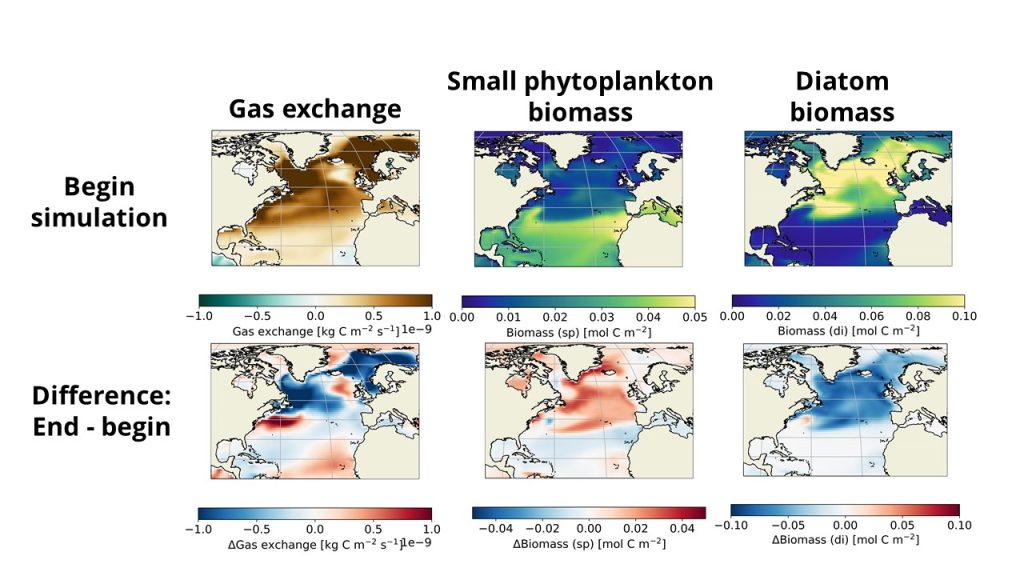NESSC research: Plankton shift when ocean warms
Increased ocean warming could cause shift of plankton population, new NESSC research shows.
Increasing CO2 emissions and ocean warming could lead to a shift of the dominant plankton population in the oceans, new research shows. If CO2 emissions into the atmosphere remain high until the year 2100, a different type of plankton will become the dominant species in the North Atlantic Ocean. This shift in plankton populations will also have an additional negative effect as less carbon will be stored in the deep ocean waters. As result, more of the emitted CO2 will remain in the atmosphere, NESSC researchers Amber Boot, Anna von der Heydt and Henk Dijkstra (IMAU, Utrecht University) illustrate in their new paper published in Geophysical Research Letters.

Plankton – the collective name for a wide range of different organisms living in ocean waters – plays an important role in removing carbon from the atmosphere and storing it for thousands of years in the deep waters of the ocean. This biological process counteracts and slows down the still increasing concentration of CO2 in the earth’s atmosphere. However, the production of plankton and the speed of carbon sequestration are linked to different conditions which can be influenced by the concentration of CO2 in the atmosphere.

Plankton replaced
Curious to learn how increasing CO2 can influence this important process, Amber Boot modeled the response of the oceans to a steeply increasing concentration of CO2 in the atmosphere until the year 2100. Results of this high CO2 scenario indicate that at the end of this century the most dominant plankton type in the North Atlantic Ocean will disappear and be replaced by a different plankton population.
This type of plankton, however, has a lower efficiency in removing carbon from the surface ocean, thereby reducing the capacity of the ocean to uptake carbon. The shift in plankton population would also result in a higher concentration of CO2 in the atmosphere, enhancing further climate change.

Article:
Effect of Plankton Composition Shifts in the North Atlantic on Atmospheric pCO2
Amber Boot , Anna. S. von der Heydt, and Henk A. Dijkstra
Geofysical Research Letters, 49, 2023
https://doi.org/10.1029/2022GL100230

